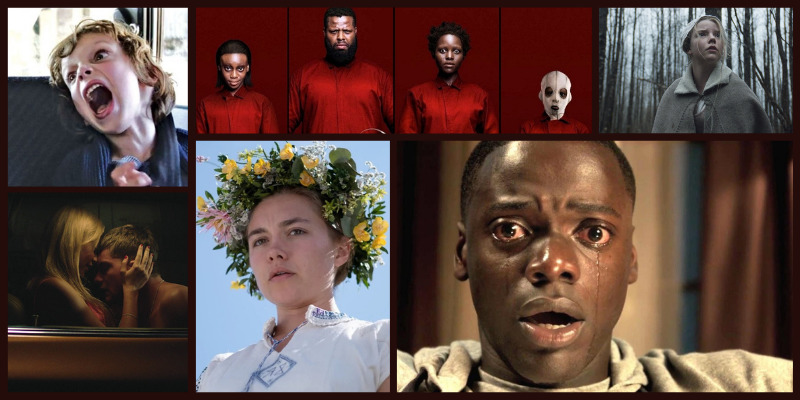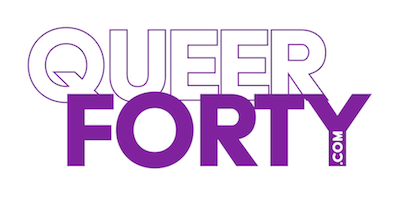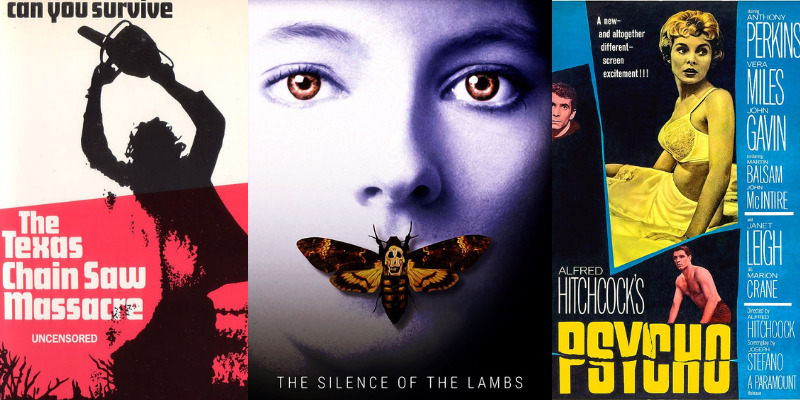Gays, Panic: Horror as a Window and a Mirror
In a space where queerness is otherness, horror is inherently queer; and when there are no other images of queerness beyond the horrific, queer-to-monster identification becomes a logical equation. A long debate in the ongoing creation of the literary canon centers around literature as window versus literature as mirror; in other words, is it better to see people like ourselves or unlike ourselves in literature?
Anyone of a marginalized identity is likely able to speak of the pains of life without a literary mirror. Likewise, anyone in a majority group who has come to understand their privilege is generally able to speak to the fact that the lack of a literary window contributed to their ignorance. Horror exists, for many queer folks, in between these two states: a window of distorted glass into a frightful world, and a semi-reflective surface where a momentary glimpse of oneself is seen for the first time — however warped.
These are the faces in the window.
Psycho: Like an Edward Hopper painting, Hitchcock’s classic is dripping in voyeurism. From the first scene of Crane in bed, as seen through the window, the visuals communicate a queerness of sexual and spatial transgression. Adultery and sex out of wedlock: these are our first impressions of Crane — a sexual and literal outlaw.
Later, when the film shifts, it is through the window of Bates peephole as he masturbates (implied in the 1960 version and explicitly clear a la the fap sound of Vince Vaughn in the 1998 Gus Van Sant remake). Bates’ peeping is his first mark of deviant behavior. However, as anyone who has seen the film can tell you, Bates’ true marker of queerness (however problematic) is the way his mother lingers in the windows of their home and his eyes.
The Texas Chainsaw Massacre: More like a Joel-Peter Witkin photograph than an Edward Hopper painting, this film leaves you looking for a Brillo pad to scrub your eyes — but the blood just won’t come off. Leatherface, like his predecessor, Bates, is based on Ed Gein. As such, he is entrenched in a complicated incestuous family dynamic.
The dinner scene alone, which plays like August: Osage County with cannibalism, will conjure the memory of tense holiday meals where queers felt alone, gaslit, and caught in some murderous crawl a 1970s anticlimax (but I’m open to the possibility I’m projecting). What really makes Leatherface queer is a scene cut from most versions of the original, ignored in the sequel and the third installment, then exploited in the awkward fourth film: Leatherface is seen alone in his room with his scalped wigs and putting on lipstick (cue the Hedwig singalong).
Funny that Leatherface’s application of makeup and a woman’s face is cut, but the continuity issue of his costume change is left untouched — perhaps because queers are seen as inexplicable and undeserving of elaboration beyond shock. If Leatherface is sympathetic in the original franchise, it is because of his desire to see another (perhaps softer) face in the mirror and because this mirror, his scalps, and his makeup are a comfort to chaos of his family, who demands he perform the masculine roles of the hunter and the butcher.
The Silence of the Lambs: To ground this film in visual art like the others, Hannibal Lecter is grand statement maker like Francis Bacon, but his queer counterpart, Buffalo Bill, is more subtle in his uncanny distortions, like Lucian Freud. Like the subjects of Freud’s paintings, Buffalo Bill wants out of his skin and into yours.
While not particularly outlandish now, his gender nonconforming presentation shocked and offended at the time, and the implied link between murder and trans-identity led to protests of the film; then as a kind of atonement, Jonathan Demme directed Philadelphia two years later. From my vantage point, it is easy to judge Demme for his poor representation and perpetuation of the “bury your gays trope,” but it’s difficult to insist that a bad mirror is better than no mirror.
And it is indeed a mirror that marks this film as queer and a cultural touchstone. The opening notes of “Goodbye Horses” will send almost any American over thirty-five into the throes of film quotes: “Would you fuck me? I’d fuck me.” And Buffalo Bill dancing with his penis tucked neatly between his legs is an exact reversal of Robert De Niro’s “You talkin’ to me” scene in Taxi Driver. For Buffalo Bill (and De Niro) the mirror provides a place of confirmation for one’s gender identity (and stereotypes).
While the focus here has been mainly reflective, a window is just as important. Horror always exists as both a window and a mirror, allowing us to see social issues beyond ourselves and even our own queerness. This October, try these films and take note of where you see yourself and where you see the “other.”
- Us (2019) — This startling look at class asks the audience to examine not just who they are but how their identity and choices are linked to others. Question to ask: To whom are you tethered?
- Midsommar (2019) — Ari Astor’s sophomore work dodges the dreaded slump and dives straight into stunning shock. Great themes abound: otherness, belonging, academia, grief, relationships. Question to ask: What is your relationship to otherness, and what are the limits of your acceptance?
- The Witch (2015) — Is it the devil? The goat? Ergot poisoning making madness? It doesn’t matter in this film; what does, however, is belonging. Question to ask: To what lengths will you go to in order to belong?
- Get Out (2017) — A brilliant and celebrated debut by Jordan Peele, this film destroys genres: equal parts drama, sci-fi, horror, and comedy. Peele tackled race in a new way. Question to ask: How do you determine the value and use of another human?
- The Babadook (2014) — A Netflix mix-up turned Jennifer Kent’s first feature into a queer fav. After you watch it, check out her short film “Monster.” The two films share many themes: child’s perspective, trauma, storytelling. Question to ask: Do you let your pain spread to others and do you let their pain spread to you?
- It Follows (2014) — Possibly a veiled morality play, this film personified the sex-death relationship that underlies every “tits-n-ass” 80’s slasher film. The soundtrack alone is terrifying, add to that the best jump scare ever, and you have a winner. Question to ask: How do your choices, your past, and the histories you create with others follow and haunt you, and what is your responsibility once you become aware of that haunting?

If you find yourself still looking for an uncomfortable queer mirror to gaze into, try Ari Astor’s short film, “The Strange Thing About the Johnsons” (available on YouTube). Or, for a more lighthearted take on Astor’s topic, try “A Reasonable Request” by Andrew Laurich (available on Vimeo). With these two shorts, I’ll leave the questioning to you.
Drop your comments, questions, reviews, and impressions in the comment section below.







Nice.
Have you seen “Let the Right One In”? (I’m partial to the original Swedish version.) I think it’s v queer and v shocking.
More recently, I think “The Lighthouse” might be a horror film, too. Not sure.